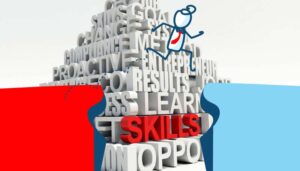Written By: Anthony Perry
The global counterfeit industry, particularly in replica products, is a trillion-dollar annual problem. While many understand the financial losses companies face due to cheaper alternatives, the other consequences of counterfeit products are often missed. These illegally manufactured items not only lack the safety regulations necessary to protect consumers but are also frequently linked to organized crime, including human trafficking and funding international criminal activities.
The primary method for these counterfeit products to enter the market is through international importation of individually packaged parcels adding up hundreds of millions daily. The sheer volume makes it impossible for officials to inspect every package and identify those containing counterfeit products. This issue highlights the critical role of automated technologies in combating counterfeiting.
The Role of Emerging Technologies
Emerging technologies such as machine learning and artificial intelligence are being sent to reduce and manage this massive issue. These automated technologies can analyze vast amounts of data quickly and accurately, finding patterns and irregularities that human inspectors might miss.
For instance, AI-powered systems can scan packages for counterfeit indicators and flag suspicious items for further inspection. Machine learning algorithms can improve over time, becoming more adept at spotting counterfeits as they process more data. This automated approach enhances the efficiency of inspections and significantly reduces the chances of counterfeit products entering the market.
Benefits of Automated Technologies
Increased Efficiency
Automated systems can handle the sheer volume of packages far more efficiently than human inspectors. Increased efficiency enables faster scanning of more packages, reducing backlogs and securing quicker identification of counterfeit items.
Improved Accuracy
Machine learning algorithms can analyze data with a level of accuracy unattainable by human inspectors. This precision helps in correctly identifying counterfeit products, reducing the number of false positives and negatives.
Cost-Effective
While the initial investment in automated technologies might be significant, the long-term savings are substantial. Reduced labor costs and improved accuracy translate to significant financial benefits for companies and regulatory bodies.
Scalability
Automated systems can easily scale to handle increased volumes as needed. This scalability ensures that the systems can keep up with the growing number of parcels without compromising efficiency or accuracy.
Real-World Examples of Automated Technologies in Action
Amazon’s Automated Fulfillment Centers: Amazon employs automated technologies in its fulfillment centers to detect counterfeit products. Machine learning algorithms analyze product listings and packaging to identify potential counterfeits. This technology helps Amazon maintain the integrity of its marketplace and protect consumers from fraudulent products.
Alibaba’s AI-Powered Anti-Counterfeit System: Alibaba has developed an AI-powered system to combat counterfeit goods on its platform. The system scans millions of product listings daily, identifying and removing suspicious items. By leveraging machine learning, Alibaba can stay ahead of counterfeiters and ensure a safer shopping experience for its users. Anti-Counterfeit Partnerships
Customs and Border Protection (CBP): The US Customs and Border Protection agency uses automated technologies to inspect and scan incoming parcels for counterfeit goods. AI systems analyze shipment data and identify patterns that indicate potential counterfeit items. This approach allows CBP to efficiently target high-risk shipments and prevent counterfeit products from entering the US market. Learn More
The Future of Counterfeit Prevention
The fight against counterfeiting is ongoing, but automated technologies offer a promising solution. As these technologies continue to evolve, their ability to secure supply chains and protect consumers will only improve. By investing in and implementing these automated systems, companies, and regulatory bodies can stay ahead in the battle against counterfeit products.
In conclusion, automated technologies are essential in the fight against counterfeiting. By leveraging machine learning and artificial intelligence, we can significantly reduce the impact of counterfeit products on the global market. These technologies improve efficiency and accuracy and provide a scalable and cost-effective solution to a trillion-dollar problem.




